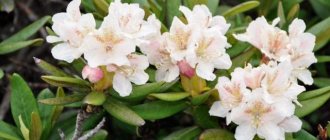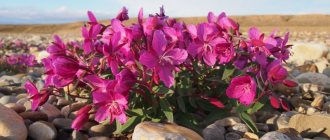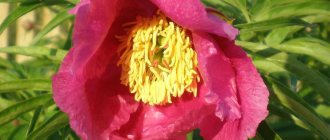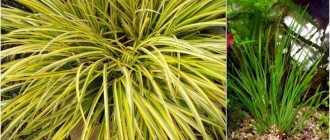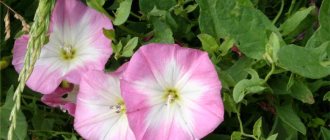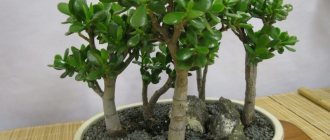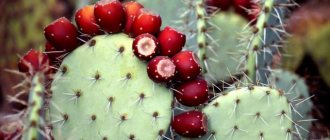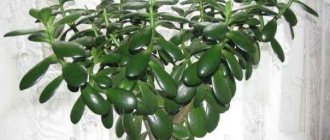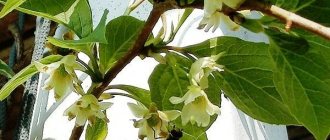With the arrival of spring, the earth puts on a lush outfit of many small flowers, emitting a pleasant aroma. However, the medicinal properties of tricolor violet and contraindications attract people more than its external beauty. The ancient Romans put fresh flowers in their intoxicating drinks. And from dry raw materials, medicinal potions were brewed to combat various ailments. In the 21st century, the plant has not lost its healing properties. Therefore, it is actively used in folk medicine.
Description of the violet tricolor plant
Tricolor violet or pansy (lat. Víola tricolor) is a herbaceous plant common in Europe and temperate regions of Asia. The plant belongs to the species of the genus Violet of the Violet family.
The popular name is Ivan-da-Marya, but plants of other genera are also called this way, for example, the oak grove (Melampyrum nemorosum) from the Norichnikov family. Other popular names for the plant: brother-and-sister, moths, field brothers, half-flower, axes, three-flowered.
In gardening, pansies are also often called the hybrid Wittrock violet (Viola x wittrockiana Gams ex Hegi), which has larger, brighter flowers.
What does a tricolor violet look like?
Violet tricolor is an annual or biennial herbaceous plant. The stem is straight or branched, from 5 to 45 cm in height. The leaves are simple, the upper ones are elliptical, the lower ones are ovate.
The flowers are beautiful, the upper petals are mostly purple or blue, the lower petals are yellow and white. Flowering time occurs in April, fruits ripen in June.
In June, the elongated three-headed top of the plant ripens, storing seeds that promote further propagation of the flower. The tricolor violet is much smaller than its usual garden counterpart and is always painted in three different colors.
Where does tricolor violet grow?
The plant is widespread in Eastern Europe, Siberia, the Far East, Scandinavia, and Asia Minor. In the “Atlas of areas and resources of medicinal plants of the USSR”, tricolor violet is described as a European species, found in Siberia only as an alien plant.
The northern border of the distribution area extends to the cities of Kirovsk, Murmansk, Kandalaksha, White Sea, Ponoy (Kola Peninsula), Mezen, Ukhta, Pechora, Vorkuta. Further, the border goes along the 60th meridian to Yekaterinburg, wedging in the east near Tobolsk. Individual locations are known in the vicinity of Tomsk, in the Kemerovo region, Krasnoyarsk and Altai territories, where tricolor violet is found as a weed.
The southern border of the range runs through Chelyabinsk to Izhevsk, then through Samara, Saratov, Volgograd, somewhat south of the Tsimlyansk Reservoir, heading to Rostov-on-Don, then through Donetsk to Zaporozhye and the Carpathians.
We recommend reading: Medicinal properties and contraindications of Solyanka Kholmovaya, application
In the west, the border of the range goes beyond the former state border of the USSR. In the northwest it reaches the coast of the Baltic Sea, along the southern shore of the Gulf of Finland it reaches St. Petersburg, then goes north along the border with Finland to Murmansk.
In Crimea, only one location of the violet is known - in the valley of the Kacha River.
It is found on fertile soils in meadows, among bushes, along forest edges, in pastures and old fallow lands. Wild plants can be found in old parks, gardens, former estates, and near roads.
violet grass
As a medicinal raw material, the herb of violet tricolor is mainly used, and occasionally the flowers of the plant. Due to its unique composition, the plant can be used to treat a wide range of diseases.
The scope of application of violets is determined depending on the specific part of the plant. The leaves are used as various poultices, and the flowers are used for tinctures. In traditional medicine, violet is used as an expectorant, and in folk medicine, the plant is used in the fight against sexually transmitted diseases, nervous diseases, cystitis, arthritis, stuttering, problems with the gastrointestinal tract and angina.
Tricolor violet is used for dental purposes, prevents inflammation and has an antiseptic effect. In pharmacies, violet is sold in the form of various syrups, extracts, gelatin capsules and powders.
Diseases
Although violets are truly resilient and are not afraid of frost, they still have a weakness - illness. Alas, they also apply to such beautiful delicate plants.
One of the most dangerous diseases for wild violets is root rot. Typically, the plant becomes infected at low temperatures and high humidity. Usually this disease is caused by pathogenic fungi that tolerate low temperatures and can be stored in the soil for a long time. Infection usually starts from the roots of plants.- Another no less dangerous mushroom for violets is late blight. Penetrates into the plant mainly through the pistil, root hairs and stomata.
- Downy mildew also affects unfortunate plants and is one of the most unpleasant diseases for a flower. A white powdery coating forms on the leaves and flowers.
- There is also rotting of leaf petioles, a rather rare disease that occurs in extreme heat when leaf petioles come into contact with moss.
There are several other dangerous diseases:
- bacterial damage to leaves;
- non-infectious rot, when as the temperature drops, violet leaves begin to gradually fade;
- leaf chlorosis.
Viral diseases include variegation.
Chemical composition
Tricolor violet extract has proven itself to be an effective remedy for the treatment of bronchopulmonary diseases. Saponins have an antitussive effect and promote the removal of sputum.
Chemical composition of violet:
- calcium;
- magnesium;
- copper;
- polysaccharides, mucus;
- tannins;
- alkaloids;
- flavonoids;
- saponins;
- essential oils;
- ascorbic and salicylic acids;
- solanine;
- tannin.
Violet has a positive effect on the cardiovascular system, strengthens the walls of blood vessels, reduces the fragility of capillaries, inhibits blood clotting, and prevents the development of thrombophlebitis.
Solanine, which is part of the plant, has an irritating effect; in small doses, it has a positive effect on the secretion of all glands.
Tannin is used in traditional and folk medicine as a hemostatic, antidiarrheal, and astringent. Polysaccharides stimulate the development of beneficial microflora in the intestines and have bifidogenic properties.
Due to the essential oils contained in the plant, violet is used as an antiseptic to treat various diseases.
Application in cosmetology
Violet preparations are applied to eliminate pimples, acne marks, and smooth out fine wrinkles around the eyes and mouth. With the help of ointments and tinctures, problems with oily, shiny skin are solved. After the procedures, capillary nutrition improves. To get rid of dandruff and make your hair silky, wash your hair with tricolor violet decoctions.
Ointment for facial skin problems
Dried tricolor violet in the amount of 3 tbsp. l. filled with oil (150 g). You can take olive or sunflower oil. Mix, close tightly and place in a dark place for 4 weeks. The finished product is squeezed out and used a couple of times a day, applied to the face.
Infusion for age spots
Pour boiling water over 1 tbsp. l. dry collection: dandelion, calendula, violet, immortelle, where all components are taken in equal parts. Infuse in a thermos or earthenware teapot for 15-20 minutes, filter. Wipe the face and décolleté area 2 times a day.
Cosmetology uses essential oils for the production of perfumes and other care products. They are distinguished by a fresh, juicy aroma, which is an excellent antidepressant in any season. Some aromas evoke memories of an abandoned garden caught in the sun in August. Patients suffering from respiratory diseases notice that the scent from the violet series does not cause shortness of breath, sneezing, or irritation of the nasopharynx, as happens with other remedies.
Tricolor violet: medicinal properties
The healing properties of tricolor violet have been known since ancient times. Violet herb is used in the treatment of rheumatism and gout as decoctions, infusions or compresses. After just a few uses, the plant relieves inflammation, pain, and improves general condition.
Pharmachologic effect:
- expectorant;
- anti-inflammatory;
- diuretic;
- antiseptic;
- choleretic;
- wound healing;
- soothing;
- antipruritic.
We recommend reading: Medicinal properties and contraindications of Echinacea purpurea, use in folk medicine
What species are described by this name?
There are over 3000 varieties of violets. They are wild and cultivated, hybrid. The name “forest violet” refers to several species that are similar to each other:
- tricolor;
- canine;
- swamp;
- white forest;
- meadow;
- fragrant.
All these species can be found in the natural environment. Below are more detailed descriptions of each type. Night violet or nocturnal violet is very popular; its flowering begins in the evening. However, the wild violet is most attractive for its naturalness.
Important! Before planting forest violets in your own garden, you need to prepare a suitable place and special soil.
How to collect
Collect the grass during the flowering period from late April until autumn. Cut only the aerial part without roots.
Dry the herb in a well-ventilated place, such as outside under a shelter. To dry evenly, spread the grass in a thin layer on a flat surface. Dry until the plant stems become brittle. To ensure even drying of the herb, stir the raw materials periodically.
Properly dried herb has a characteristic pleasant and sweet aroma. Store violets in a dry place in thick cardboard boxes. Subject to storage conditions, violet does not lose its beneficial properties for 18 months.
Care
One of the advantages of forest violet is the lack of careful care.
Important! Remember that the flower needs constant watering when it is only at the seedling stage.
If the violet grows indoors, from time to time it should be taken outside for ventilation. It is necessary to fertilize the plant with leaf compost once every two weeks, but do not overdo it.
Violets themselves are modest and like to hide in the shade , but can grow in a sunny place if they are moistened. They withstand winter and withstand minor droughts. A forest violet, especially a fragrant one, will take two years to grow to an area of one square meter.
How to use
Violet is used in the form of infusions, decoctions or compresses . You can collect the finished raw materials yourself or purchase them in the form of tea bags at the pharmacy. Choose the medicinal form of the plant based on the recommendations of a specialist and your own preferences. The easiest way is to prepare a decoction of violets at home, and also purchase ready-made, packaged raw materials.
Cough decoction
Violet for cough is an effective remedy, but before taking it, you need to establish the nature of the origin of the symptom. Inflammatory processes localized in the upper and lower respiratory tract cannot be treated with one remedy.
If the cough is due to a bacterial infection, an antibiotic is needed; if it is caused by a virus, conditions for recovery must be created. But in both cases, medicinal plants will help alleviate the condition and speed up recovery.
Ingredients:
- Chopped violet herb - 1 tbsp. l.
- Water - 1 glass.
How to prepare : Fill the plant with water, cook for 15 minutes. Leave for 1 hour, strain before use.
How to use : Take 1 glass of decoction orally 1-2 times a day.
Result : Violet has an expectorant effect when coughing and removes phlegm. If the cough is dry and there is discomfort in the throat, then thanks to its softening effect, the plant will alleviate the condition.
Flu infusion
Violet is effective in the treatment of acute respiratory viral infections, influenza, acute respiratory infections and other colds.
Ingredients:
- Violet herb - 2 gr.
- Water - 1 glass.
How to prepare : Fill the plant with water, leave for 15 minutes.
How to use : Take ½ cup orally once a day. Gargle with the resulting infusion for flu, sore throat and inflammatory diseases.
Result : Due to the fact that the plant contains ascorbic and salicylic acids, violet relieves inflammation, eliminates painful and aching pain in the joints, and improves general condition.
Healing tea for diathesis
Violet for children is very useful in the treatment of diathesis. Start treatment with minimal doses to see how the child’s body reacts to the plants.
We recommend reading: Cissus quadrangularis - medicinal properties and harm, how to use
Before use in both adults and children, consult a specialist. Violet is a poisonous plant and can cause harm if the dosage is incorrectly selected.
Ingredients:
- Tricolor violet - 1 tsp.
- Veronica officinalis - 1 tsp.
- Series - 1 tsp.
- Boiling water - 1 glass.
How to prepare : Mix all the plants in the indicated proportions, add water. Leave for a few minutes.
How to use : Give children 1 tsp. 3 times a day.
Result : Relieves inflammation, itching, redness.
Infusion for rheumatism and gout
The infusion can be used both internally and externally.
Ingredients:
- Crushed raw materials - 2 tsp.
- Boiled water - 250 ml.
How to prepare : Pour hot boiled water over the plant. Leave for 10 minutes.
How to use : Take 3 glasses every day or lubricate the skin on affected areas of the body.
Result : Removes excess salts from the body, has a diuretic effect, relieves inflammation, improves metabolic processes, and normalizes general condition.
Peculiarities
Forest violet is quite a useful and interesting flower that can help with many troubles. For example:
- For sore throat, use an infusion of this flower.
- For respiratory diseases, medicine from rhizomes helps us.
- Also, the pleasant smell of violet calms and relaxes, especially during hysteria, nervous excitement and seizures.
- Violets are used to make oils that remove swelling of the face and cracks that appear on the lips.
Note! But violet preparations should be taken with extreme caution; do not forget that this is still a poisonous plant.
Forest violet. Useful properties and application:
The wild violet is truly a unique flower. Modest, loving to hide in the shade, nevertheless, it will decorate your garden with its magical purple star flowers, lift your spirits with its aroma and simply be a delight to the eye.
Contraindications
Despite the medicinal properties of the plant, there are contraindications for tricolor violet when consumed. Violet should be used with caution by nursing women. During the period of bearing a child, violet should not be taken, as it increases the tone of the uterus.
Contraindications to the use of the plant:
- individual intolerance;
- gastrointestinal diseases;
- hepatitis and glomerulonephritis.
If the recommended dosage is not followed, side effects may occur.
Side effects:
- nausea;
- vomit;
- weakness.
Planting and growing
- The seeds should be sown when they are freshly harvested; this can be done at any time of the year, except winter. They begin to sprout within three weeks.
- The soil should be nutritious, loose, loamy. You need to spread the seeds on the surface and sprinkle a little soil. It is necessary to ensure that direct sunlight does not fall on the future flower. Next you need to cover everything with film.
- Do not forget about watering the seeds, which is carried out every day.
- We should not forget about ventilation.
- Planting of seeds should take place on convex places, a small hill.
- Despite the fact that violets are resistant to almost everything, they need to be watered in extreme heat.
Varieties
There are five subspecies of tricolor violet:
- Viola tricolor subsp. curtisii is a subspecies of curtis.
- Viola tricolor subsp. macedonica - Macedonian subspecies.
- Viola tricolor subsp. matutina - morning subspecies.
- Viola tricolor subsp. subalpina - subalpine subspecies.
- Viola tricolor subsp. tricolor - tricolor subspecies.
